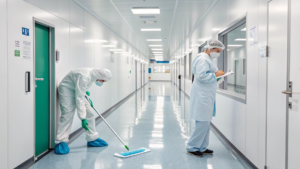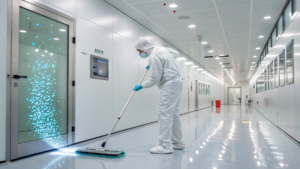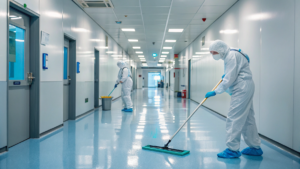
In the high-stakes environments of pharmaceutical manufacturing and semiconductor production, cleanrooms serve as the critical foundation for quality and safety. These meticulously controlled spaces protect sensitive processes from particulate contamination that could compromise product integrity or patient safety. Yet one vulnerability consistently threatens even the most sophisticated cleanroom operations: pre-entry contamination.
While extensive protocols govern behavior inside cleanrooms, the journey from exterior environments into these controlled spaces often remains a weak link in contamination control strategies. Why isn’t the risk of cleanliness addressed more effectively before personnel step into these controlled environments? The answer lies in understanding both the science of contamination and the human factors that influence compliance with safety protocols.
Understanding Pre-Entry Cleanroom Contamination Risks

Pre-entry contamination occurs when particles, microbes, or other contaminants are introduced into the cleanroom environment before proper decontamination procedures are completed. Research shows that human personnel are the primary source of cleanroom contamination, shedding approximately 100,000 particles per minute during normal activity. Common pre-entry contamination sources include:
- Incompletely removed street clothing particles
- Improperly donned cleanroom garments
- Inadequate air shower operation
- Contaminated materials transported into the cleanroom
- Insufficient gowning room cleanliness
Even minor lapses in protocol during the transition from uncontrolled to controlled environments can introduce contaminants that compromise cleanroom integrity. For semiconductor manufacturers, a single microparticle can render an entire silicon wafer useless, while pharmaceutical operations face regulatory consequences and patient safety risks from microbial contamination.
Gaps in Current Cleanroom Entry Protocols
Despite stringent industry standards, many facilities struggle with inconsistent pre-entry contamination control. Our analysis of cleanroom operations reveals several common weaknesses:
- Procedural drift – Over time, personnel develop shortcuts that deviate from established protocols
- Inadequate training renewal – Initial training is often thorough, but regular refreshers are neglected
- Outdated monitoring systems – Many facilities lack real-time contamination detection capabilities
- Insufficient gowning verification – Visual inspection alone cannot detect microscopic contamination
- Poor airflow management – Suboptimal air shower design fails to remove contaminants effectively
These gaps persist partly because contamination events rarely provide immediate, visible feedback. The consequences emerge later in production failures, quality deviations, or product recalls—making it difficult to trace problems back to specific pre-entry protocol failures.
Actionable Strategies to Mitigate Pre-Entry Risks
Effective pre-entry contamination control requires a comprehensive approach combining procedural rigor with technological support. Consider implementing these Cleanroom Safety Tips:
- Implement standardized gowning sequences with visual guides and training validation
- Deploy advanced air shower systems with sufficient duration and appropriate air velocity
- Establish regular garment testing for particle retention effectiveness
- Create contamination control zones with progressive cleanliness requirements
- Integrate real-time particulate monitoring at critical transition points
Cleanroom managers should also conduct regular risk assessments focused specifically on pre-entry processes. By identifying potential failure points before contamination occurs, facilities can proactively strengthen their protective measures.
The Role of Technology in Cleanroom Safety
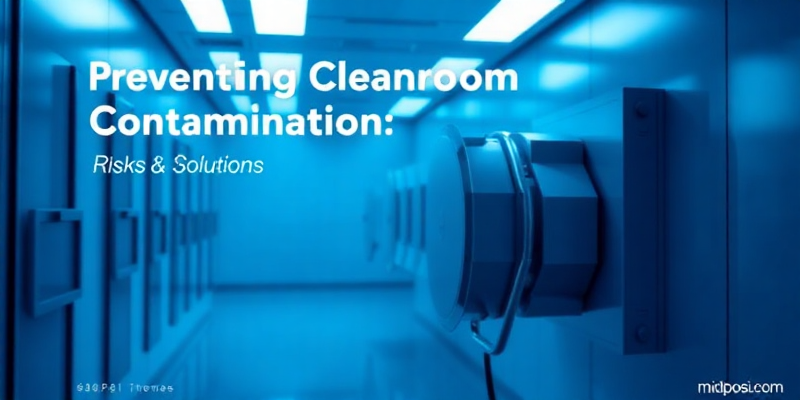
Modern technology offers powerful solutions for pre-entry contamination control. Innovations bringing measurable improvements include:
- Automated gowning verification systems using machine vision to detect improper garment application
- IoT-enabled particulate monitoring providing real-time feedback on contamination levels
- Digital compliance tracking that documents personnel adherence to entry protocols
- Advanced material transfer systems minimizing contamination during supply movement
- Electrostatic neutralization technology reducing particle attraction and transfer
These technologies align with the latest Cleanroom Standards while delivering practical contamination reduction. The initial investment typically generates significant returns through decreased investigation costs, reduced product losses, and improved regulatory compliance.
Case Study: Pharmaceutical Excellence Through Pre-Entry Control
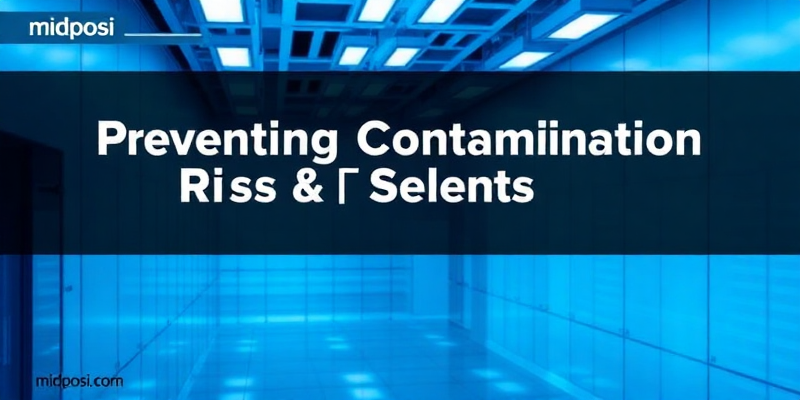
A leading pharmaceutical company manufacturing injectable medications faced recurring contamination events despite passing routine environmental monitoring. Investigation revealed inconsistent pre-entry practices as the likely root cause. By partnering with midposi.com, they implemented comprehensive pre-entry contamination controls:
- Advanced three-stage air shower system with optimized air velocity
- Real-time particulate monitoring with compliance tracking
- Enhanced gowning room design with clear workflow visualization
- Comprehensive retraining program for all personnel
Within three months, environmental monitoring showed a 70% reduction in particulate levels, while production batch failures decreased by 63%. Most importantly, regulatory inspections resulted in zero observations related to contamination control.
Protect Your Space – Buy Suits! clicca qui
FAQs
- What are cleanroom contamination risks? Cleanroom contamination risks arise from particles and microbes introduced into the sterile environment, primarily from personnel.
- How can I prevent contamination in cleanrooms? Implement rigorous gowning protocols, conduct regular training, and utilize advanced monitoring and verification technologies.
- Why is pre-entry contamination a concern? Because pre-entry contamination can compromise cleanliness standards and lead to significant quality and safety issues in critical manufacturing processes.


